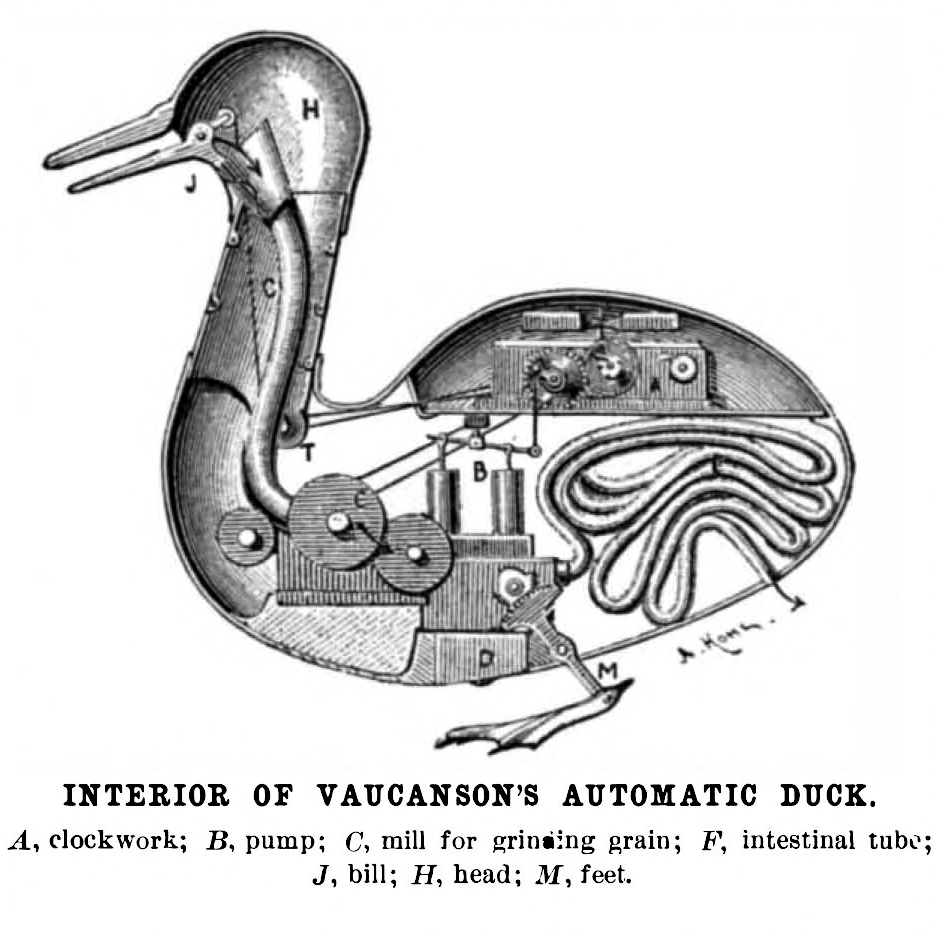|
Power Of A Method
In methodology, the power of a method is inversely proportional to the generality of the method, i.e.: the more specific the method, the more powerful. Examples ''rather general (not very powerful)'' * the exception proves the rule; * blame your predecessor; * when in doubt, cut it out; * to understand something is to stand under it; * false dichotomy, as "there are two kinds of people in the world" ''somewhat specific'' * find, then control key variables to make an experiment reproducible. * make hypotheses, then try to disprove them; * form a question, the answer to which will divide the problem space into two subspaces of about equal size; * Occam's razor: all else being equal, the more likely hypothesis is the one with fewer assumptions; * measure with micrometer, mark with chalk, cut with axe; ''very specific (very powerful)'' * confirm presence of blood with luminol Luminol (C8H7N3O2) is a chemical that exhibits chemiluminescence, with a blue glow, when mixed with an ... [...More Info...] [...Related Items...] OR: [Wikipedia] [Google] [Baidu] |
Methodology
In its most common sense, methodology is the study of research methods. However, the term can also refer to the methods themselves or to the philosophical discussion of associated background assumptions. A method is a structured procedure for bringing about a certain goal. In the context of research, this goal is usually to discover new knowledge or to verify pre-existing knowledge claims. This normally involves various steps, like choosing a sample, collecting data from this sample, and interpreting this data. The study of methods involves a detailed description and analysis of these processes. It includes evaluative aspects by comparing different methods to assess their advantages and disadvantages relative to different research goals and situations. This way, a methodology can help make the research process efficient and reliable by guiding researchers on which method to employ at each step. These descriptions and evaluations of methods often depend on philosophical background ... [...More Info...] [...Related Items...] OR: [Wikipedia] [Google] [Baidu] |
False Dichotomy
A false dilemma, also referred to as false dichotomy or false binary, is an informal fallacy based on a premise that erroneously limits what options are available. The source of the fallacy lies not in an invalid form of inference but in a false premise. This premise has the form of a disjunctive claim: it asserts that one among a number of alternatives must be true. This disjunction is problematic because it oversimplifies the choice by excluding viable alternatives, presenting the viewer with only two absolute choices when in fact, there could be many. For example, a false dilemma is committed when it is claimed that "Stacey spoke out against capitalism; therefore, she must be a communist". One of the options excluded is that Stacey may be neither communist nor capitalist. False dilemmas often have the form of treating two contraries, which may both be false, as contradictories, of which one is necessarily true. Various inferential schemes are associated with false dilemmas, ... [...More Info...] [...Related Items...] OR: [Wikipedia] [Google] [Baidu] |
Reproducibility
Reproducibility, also known as replicability and repeatability, is a major principle underpinning the scientific method. For the findings of a study to be reproducible means that results obtained by an experiment or an observational study or in a statistical analysis of a data set should be achieved again with a high degree of reliability when the study is replicated. There are different kinds of replication but typically replication studies involve different researchers using the same methodology. Only after one or several such successful replications should a result be recognized as scientific knowledge. With a narrower scope, ''reproducibility'' has been introduced in computational sciences: Any results should be documented by making all data and code available in such a way that the computations can be executed again with identical results. In recent decades, there has been a rising concern that many published scientific results fail the test of reproducibility, evoking a r ... [...More Info...] [...Related Items...] OR: [Wikipedia] [Google] [Baidu] |
Hypothesis
A hypothesis (plural hypotheses) is a proposed explanation for a phenomenon. For a hypothesis to be a scientific hypothesis, the scientific method requires that one can test it. Scientists generally base scientific hypotheses on previous observations that cannot satisfactorily be explained with the available scientific theories. Even though the words "hypothesis" and "theory" are often used interchangeably, a scientific hypothesis is not the same as a scientific theory. A working hypothesis is a provisionally accepted hypothesis proposed for further research in a process beginning with an educated guess or thought. A different meaning of the term ''hypothesis'' is used in formal logic, to denote the antecedent of a proposition; thus in the proposition "If ''P'', then ''Q''", ''P'' denotes the hypothesis (or antecedent); ''Q'' can be called a consequent. ''P'' is the assumption in a (possibly counterfactual) ''What If'' question. The adjective ''hypothetical'', meaning "hav ... [...More Info...] [...Related Items...] OR: [Wikipedia] [Google] [Baidu] |
Problem Space
Problem solving is the process of achieving a goal by overcoming obstacles, a frequent part of most activities. Problems in need of solutions range from simple personal tasks (e.g. how to turn on an appliance) to complex issues in business and technical fields. The former is an example of simple problem solving (SPS) addressing one issue, whereas the latter is complex problem solving (CPS) with multiple interrelated obstacles. Another classification is into well-defined problems with specific obstacles and goals, and ill-defined problems in which the current situation is troublesome but it is not clear what kind of resolution to aim for. Similarly, one may distinguish formal or fact-based problems requiring psychometric intelligence, versus socio-emotional problems which depend on the changeable emotions of individuals or groups, such as tactful behavior, fashion, or gift choices. Solutions require sufficient resources and knowledge to attain the goal. Professionals such as ... [...More Info...] [...Related Items...] OR: [Wikipedia] [Google] [Baidu] |
Occam's Razor
Occam's razor, Ockham's razor, or Ocham's razor ( la, novacula Occami), also known as the principle of parsimony or the law of parsimony ( la, lex parsimoniae), is the problem-solving principle that "entities should not be multiplied beyond necessity". It is generally understood in the sense that with competing theories or explanations, the simpler one, for example a model with fewer parameters, is to be preferred. The idea is frequently attributed to English Franciscan friar William of Ockham (), a scholastic philosopher and theologian, although he never used these exact words. This philosophical razor advocates that when presented with competing hypotheses about the same prediction, one should select the solution with the fewest assumptions, and that this is not meant to be a way of choosing between hypotheses that make different predictions. Similarly, in science, Occam's razor is used as an abductive heuristic in the development of theoretical models rather than as a rigoro ... [...More Info...] [...Related Items...] OR: [Wikipedia] [Google] [Baidu] |
Luminol
Luminol (C8H7N3O2) is a chemical that exhibits chemiluminescence, with a blue glow, when mixed with an appropriate oxidizing agent. Luminol is a white-to-pale-yellow crystalline solid that is soluble in most polar organic solvents, but insoluble in water. Forensic investigators use luminol to detect trace amounts of blood at crime scenes, as it reacts with the iron in hemoglobin. Biologists use it in cellular assays to detect copper, iron, cyanides, as well as specific proteins via western blotting. When luminol is sprayed evenly across an area, trace amounts of an activating oxidant make the luminol emit a blue glow that can be seen in a darkened room. The glow only lasts about 30 seconds, but can be documented photographically. The glow is stronger in areas receiving more spray; the intensity of the glow does not indicate the amount of blood or other activator present. Synthesis Luminol is synthesized in a two-step process, beginning with 3-nitrophthalic acid. First, hydra ... [...More Info...] [...Related Items...] OR: [Wikipedia] [Google] [Baidu] |
Gödel's Incompleteness Theorems
Gödel's incompleteness theorems are two theorems of mathematical logic Mathematical logic is the study of logic, formal logic within mathematics. Major subareas include model theory, proof theory, set theory, and recursion theory. Research in mathematical logic commonly addresses the mathematical properties of for ... that are concerned with the limits of in formal axiomatic theories. These results, published by Kurt Gödel in 1931, are important both in mathematical logic and in the philosophy of mathematics. The theorems are widely, but not universally, interpreted as showing that Hilbert's program to find a complete and consistent set of axioms for all mathematics is impossible. The first incompleteness theorem states that no consistency, consistent system of axioms whose theorems can be listed by an effective procedure (i.e., an algorithm) is capable of proving all truths about the arithmetic of natural numbers. For any such consistent formal system, there will always b ... [...More Info...] [...Related Items...] OR: [Wikipedia] [Google] [Baidu] |
Holism
Holism () is the idea that various systems (e.g. physical, biological, social) should be viewed as wholes, not merely as a collection of parts. The term "holism" was coined by Jan Smuts in his 1926 book ''Holism and Evolution''."holism, n." OED Online, Oxford University Press, September 2019, www.oed.com/view/Entry/87726. Accessed 23 October 2019. While his ideas had racist connotations, the modern use of the word generally refers to treating a person as an integrated whole, rather than as a collection of separate systems. For example, well-being may be regarded as not merely physical health, but also psychological and spiritual well-being. Meaning The exact meaning of "holism" depends on context. Jan Smuts originally used "holism" to refer to the tendency in nature to produce wholes from the ordered grouping of unit structures. However, in common usage, "holism" usually refers to the idea that a whole is greater than the sum of its parts.J. C. Poynton (1987) SMUTS'S HOLISM AND EVOL ... [...More Info...] [...Related Items...] OR: [Wikipedia] [Google] [Baidu] |
Reductionism
Reductionism is any of several related philosophical ideas regarding the associations between phenomena which can be described in terms of other simpler or more fundamental phenomena. It is also described as an intellectual and philosophical position that interprets a complex system as the sum of its parts. Definitions ''The Oxford Companion to Philosophy'' suggests that reductionism is "one of the most used and abused terms in the philosophical lexicon" and suggests a three-part division: # Ontological reductionism: a belief that the whole of reality consists of a minimal number of parts. # Methodological reductionism: the scientific attempt to provide an explanation in terms of ever-smaller entities. # Theory reductionism: the suggestion that a newer theory does not replace or absorb an older one, but reduces it to more basic terms. Theory reduction itself is divisible into three parts: translation, derivation, and explanation. Reductionism can be applied to any phenomenon, ... [...More Info...] [...Related Items...] OR: [Wikipedia] [Google] [Baidu] |




